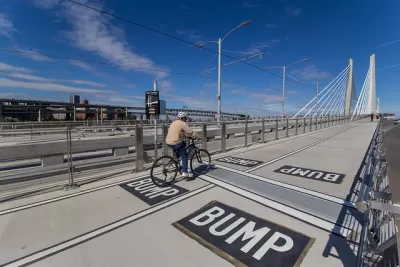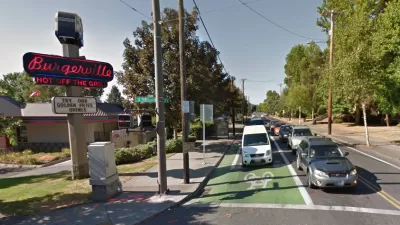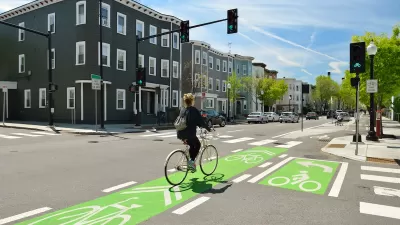The Portland Bureau of Transportation and Multnomah County agree on a 30 mph speed limit on five downtown bridges, but the state's department of transportation denied the change on two key spans.

Multnomah County and the city of Portland are "working together to reduce speed limits on several Willamette River bridges" in an effort to "reach Vision Zero safety goals and to create a more welcoming environment for non-drivers," reports Jonathan Maus. "PBOT and the County want speed limits on all five of their downtown bridges — the Broadway, Burnside, Hawthorne, Morrison and Sellwood — to not exceed 30 mph," but have not been granted permission for two key bridges from the Oregon Department of Transportation. "Now Multnomah County plans to appeal ODOT’s decision at a meeting of the state’s Speed Zone Review Panel next month."
In a letter to ODOT, the Multnomah County Bicycle and Pedestrian Advisory Committee writes that "[t]he speed limit reduction is in coordination with the PBOT Vision Zero program, which has a goal to reduce all speeds in the Central City area, including the County-owned bridges." The letter goes on, "[i]t is important for the safety of bicycle lane users to reduce the speed differential with motor vehicle traffic" on all of downtown Portland's bridges, and that "conflicts between pedestrians and motor vehicle drivers are common occurrences here. The people who use these areas deserve to have slower, safer motor vehicle traffic." Beyond making the bridge safer, the letter goes on, "speed limits should be consistent on all downtown bridges."
FULL STORY: Multnomah County and City of Portland push ODOT for lower speed limits on Hawthorne and Burnside bridges

Study: Maui’s Plan to Convert Vacation Rentals to Long-Term Housing Could Cause Nearly $1 Billion Economic Loss
The plan would reduce visitor accommodation by 25,% resulting in 1,900 jobs lost.

North Texas Transit Leaders Tout Benefits of TOD for Growing Region
At a summit focused on transit-oriented development, policymakers discussed how North Texas’ expanded light rail system can serve as a tool for economic growth.

Why Should We Subsidize Public Transportation?
Many public transit agencies face financial stress due to rising costs, declining fare revenue, and declining subsidies. Transit advocates must provide a strong business case for increasing public transit funding.

Dear Tesla Driver: “It’s not You, It’s Him.”
Amidst a booming bumper sticker industry, one writer offers solace to those asking, “Does this car make me look fascist?”

A Visual Celebration of Manhattan’s Chinatown Elder Community, Through Food
Lanterns, cafeteria trays, and community connection take center stage in this stunning photo essay.

How to Make US Trains Faster
Changes to boarding platforms and a switch to electric trains could improve U.S. passenger rail service without the added cost of high-speed rail.
Urban Design for Planners 1: Software Tools
This six-course series explores essential urban design concepts using open source software and equips planners with the tools they need to participate fully in the urban design process.
Planning for Universal Design
Learn the tools for implementing Universal Design in planning regulations.
City of Santa Clarita
Ascent Environmental
Institute for Housing and Urban Development Studies (IHS)
City of Grandview
Harvard GSD Executive Education
Toledo-Lucas County Plan Commissions
Salt Lake City
NYU Wagner Graduate School of Public Service





























